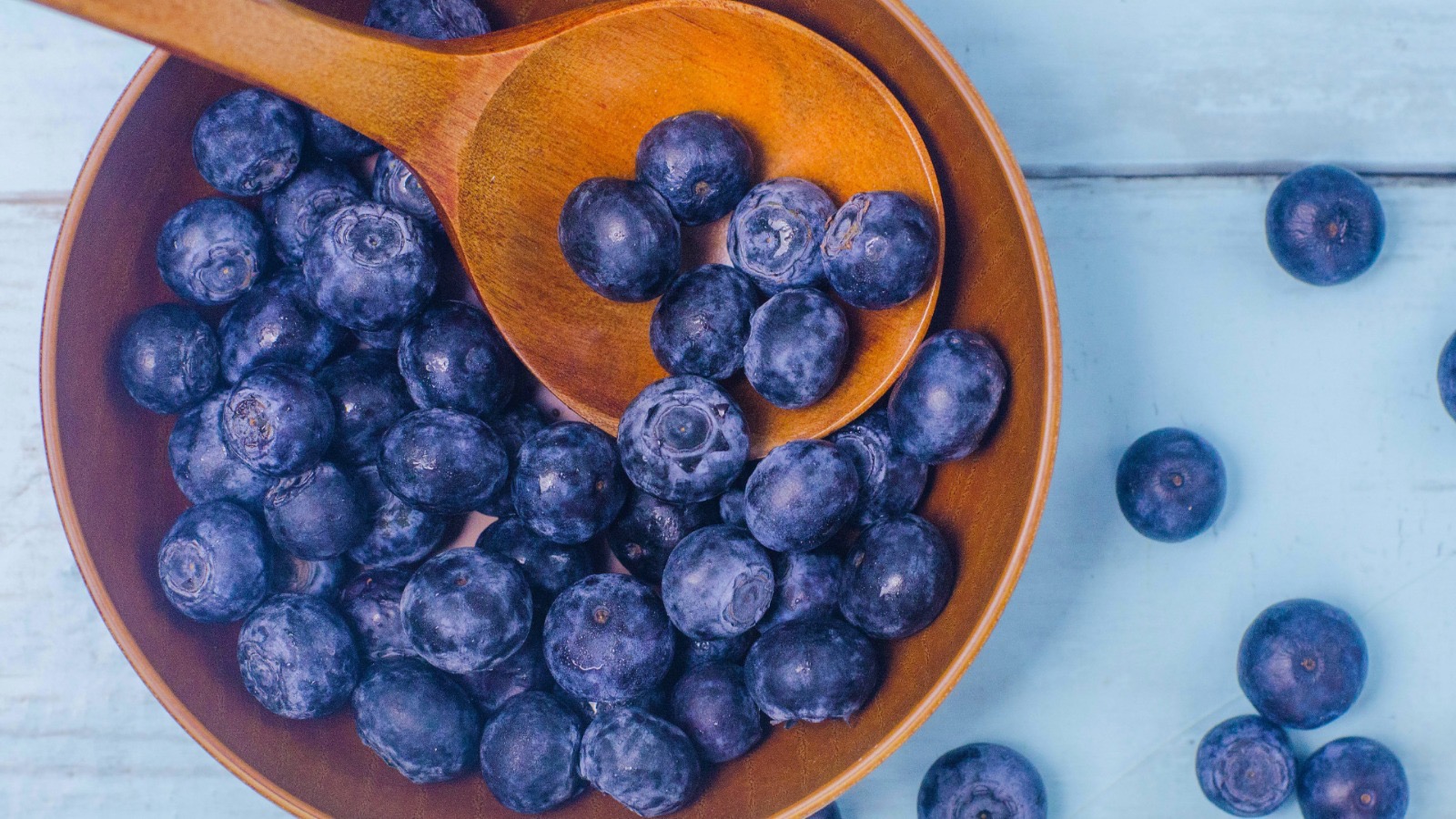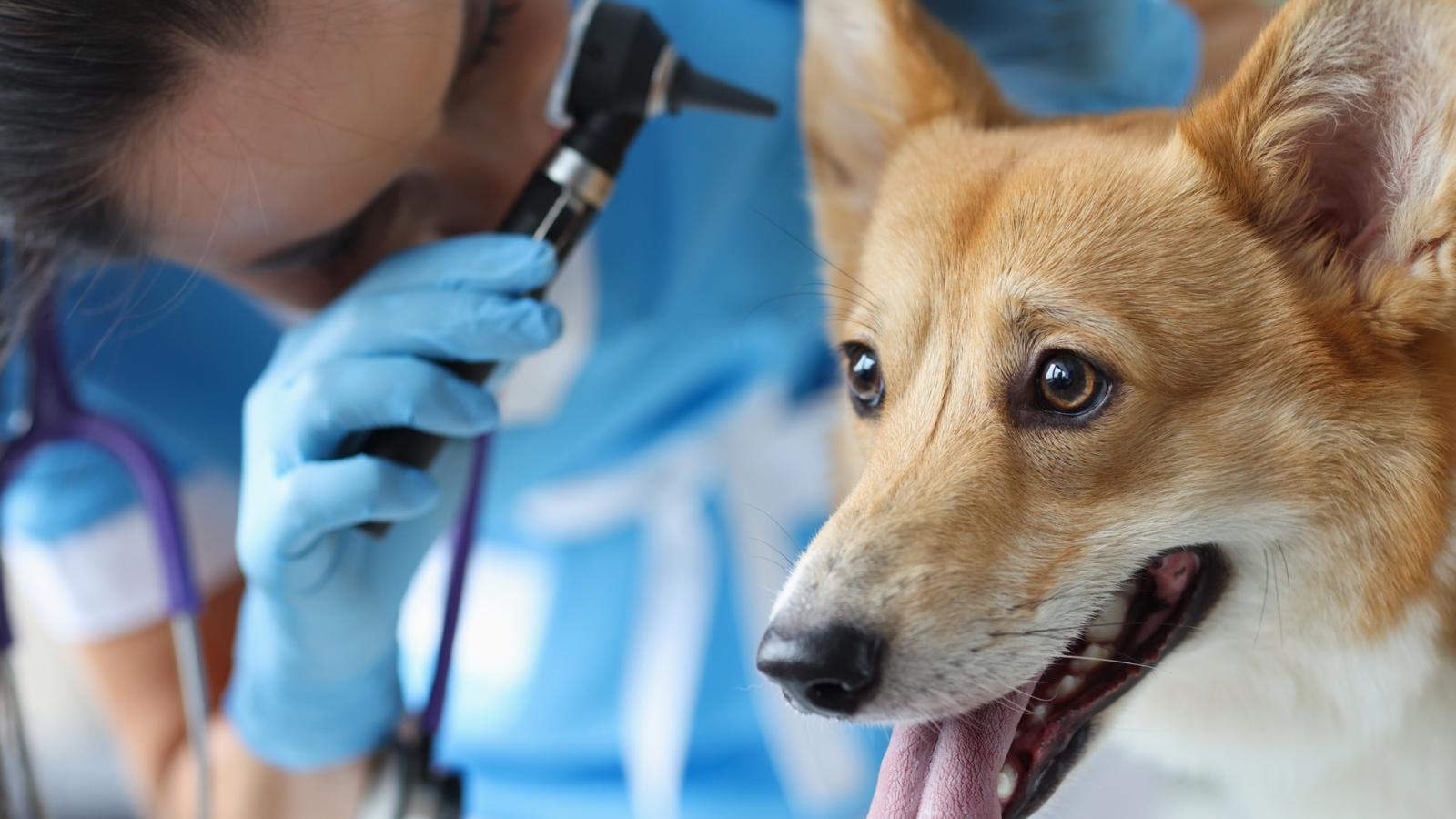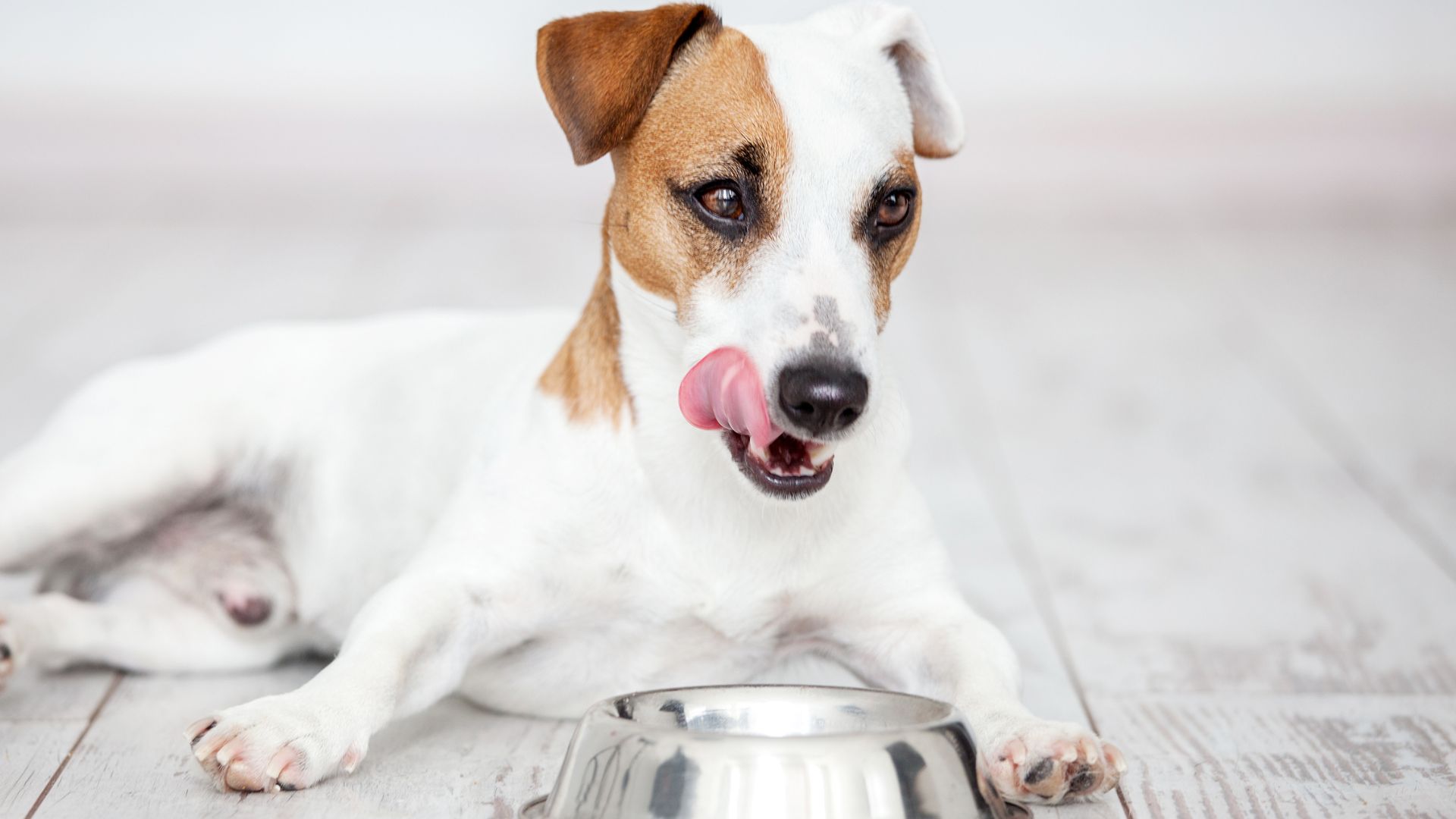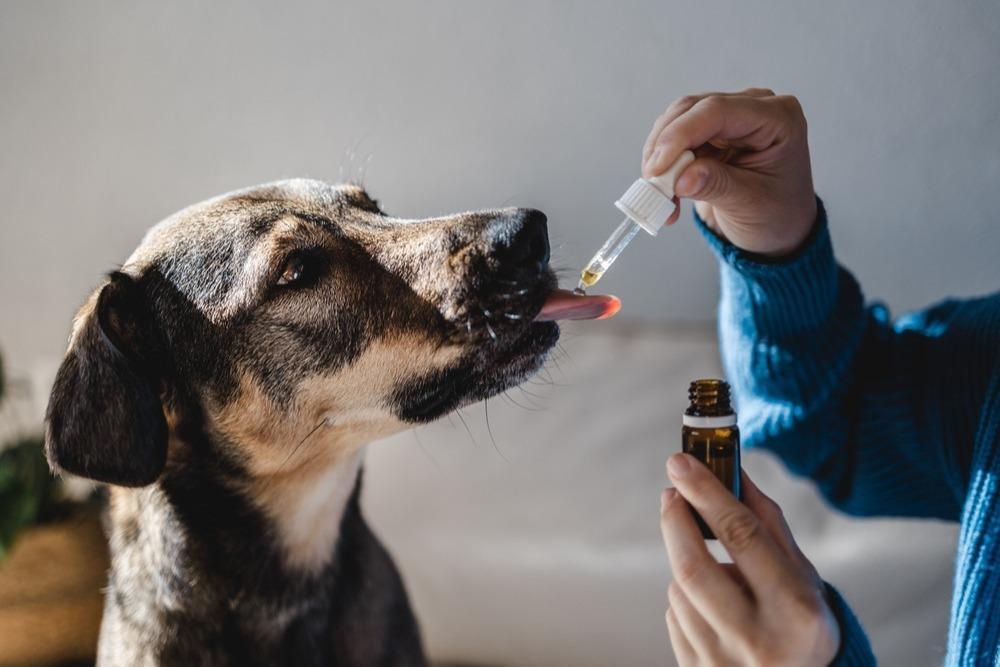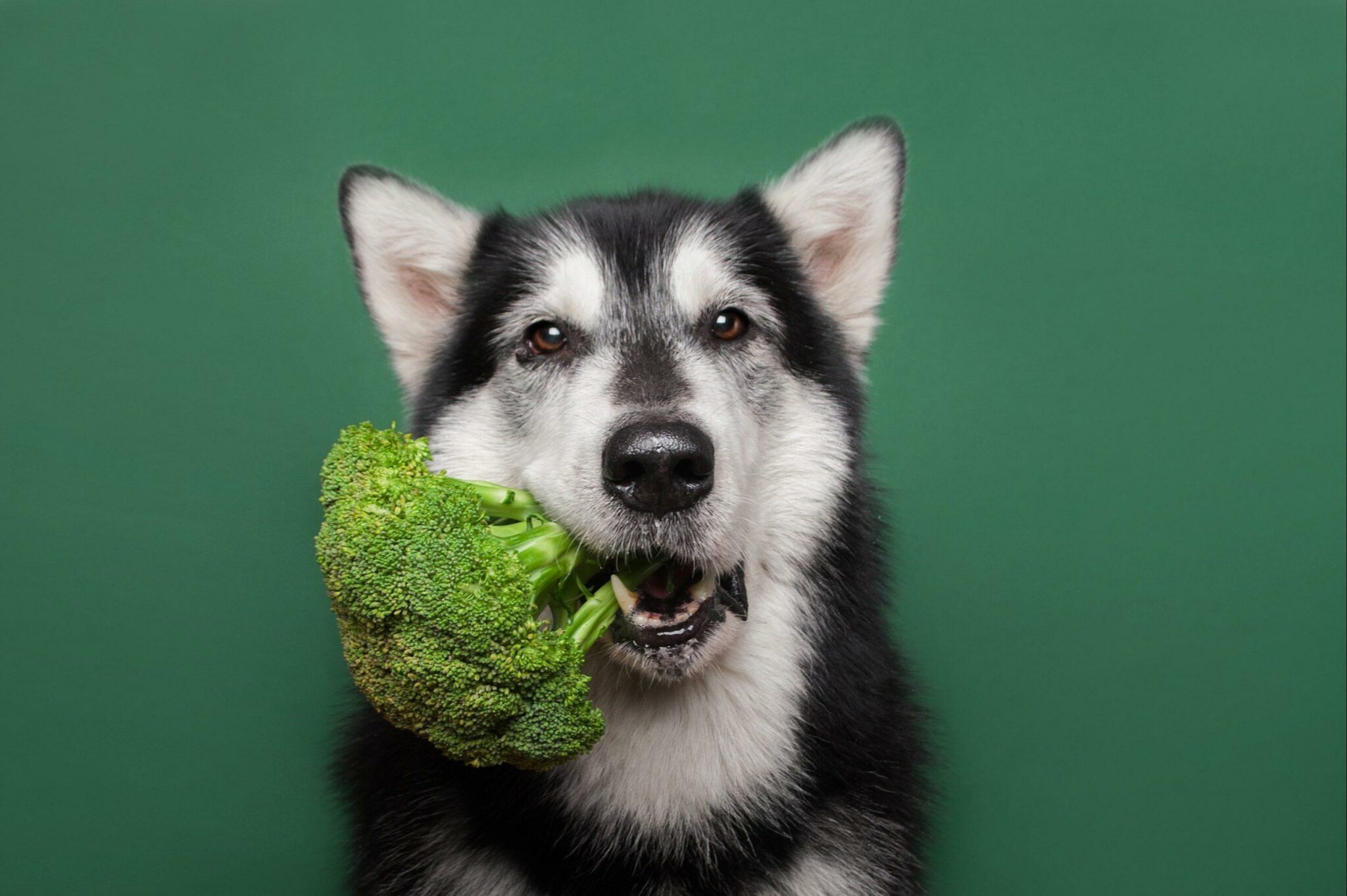Whether you describe your dog as a drama queen or not, most dogs are incredibly good at hiding pain. This mechanism makes complete evolutionary sense. Showing pain, showed a weakness of which predators could take advantage of. Here at my Pet Nutritionist, when you book for a consultation, we ask certain questions to determine if undetected pain could be present, amongst other things.
Whilst you may immediately consider the dog limping or struggling to get out of their bed, chances are by this point, the pain has moved past a threshold that they are unable to hide.
Our best chance as owners is to notice the subtleties of pain in the canine and know when to seek further help. So let’s explore the mechanism of pain in a little more detail, signs to watch out for what we can do for our four-legged friends.
What is pain?
We’ve all stubbed our toe in the middle of the night or stood on a piece of lego. This is acute pain, the event, despite being painful, is in fact short lived. This can occur for our dogs too, when they run into a plant pot in the garden for example. But pain can become chronic and this is often what they hide.
Chronic pain is more commonly associated with musculoskeletal issues in our dogs, in cases of dysplasia or arthritis. But it can also be associated with gut dysfunction and many other diseases in the body.
The origin of all pain is inflammation.
Irrespective of the type of pain whether it is acute or chronic pain, peripheral or central pain, nociceptive or neuropathic pain, the underlying origin is inflammation and the inflammatory response.
So what is the inflammatory response?
Inflammation is a normal response of the body to protect tissues from infection, injury or disease. The inflammatory response begins with the production and release of chemical agents by cells in the infected, injured or diseased tissue.
These agents cause redness, swelling, pain, heat and loss of function. Inflamed tissues generate additional signals that recruit leukocytes to the site of inflammation. Leukocytes destroy any infective or injurious agent and remove cellular debris from damaged tissue. This inflammatory response usually promotes healing but, if uncontrolled, may become harmful.
Acute inflammation typically lasts only a few days. If a wound gets hot, turns red, hurts, and swells, we recognise that inflammation is at work. In this instance, inflammation is a beneficial process, serving to immobilise the area of injury as the rest of the immune system mobilises to heal. The treatment of acute inflammation, the administration of non-steroidal anti-inflammatory agents, provides relief of pain and fever.
In contrast, chronic inflammation lasts weeks, months or even indefinitely and causes tissue damage.
In chronic inflammation, the inflammation becomes the problem rather than the solution to infection, injury or disease. Chronically inflamed tissues continue to generate signals that request help from leukocytes in the bloodstream. When leukocytes reach the tissue, they bring inflammation to the party. This chronic inflammatory response can break down healthy tissue in a misdirected attempt at repair and healing.
As mentioned, perhaps the most understood cause of pain is joint inflammation.
Repeated trauma or stress to the joint, incurred during everyday use, training, or performance, is often the cause of joint inflammation. You will notice the familiar symptoms like lameness, swelling and heat. The initial inflammation usually involves only the soft tissue structures of the joint, and cartilage damage is often not present at this stage. This inflammation allows leukocytes, or white blood cells, which are normally filtered out of the joint, to invade the joint space. The inflamed synovial membrane and the leukocytes release destructive enzymes such as free radicals, cytokines, and prostaglandins, all of which are potentially damaging to the cartilage. This is primarily what anti-inflammatory medications work on, they generally inhibit the production of prostaglandins.
Joint degradation is an unfortunate side effect of ageing, but this can occur a lot sooner in those working or particularly active dogs. Degradation can also occur as aside effect in cases of dysplasia; as the bones are not sitting in the joint correctly, friction results in excessive degradation and subsequent inflammation and pain.
In these cases, treatment is more relating to pain management and making your dog more comfortable. There are a number of practitioners that specialise in musculoskeletal concerns in the canine.
- Specialist Vets
- Chiropractors
- Vets Qualified in Acupuncture
- Canine Massage Therapists
- Hydrotherapists
- Physiotherapist
Whilst there are breeds that are genetically predisposed to conditions like hip or elbow dysplasia, being mindful of appropriate nutrition during development along with appropriate exercise during growth is essential. Large breeds undergo a rapid stage of development and so essential nutrients to bone mineralization should be included in the diet; namely whole food sources of calcium and phosphorus along with vitamin D. Weight should also be monitored in the growing puppy. The bottom line? Count the nutrient dense, fresh food additions to your puppy’s diet, not the calories.
As an aside, there is a lot of attention paid to the calcium: phosphorus ratio in the growing large breed. The note to make is that organic sources of both minerals are slowly and less efficiently absorbed; so, in fresh fed dogs this is less of a concern in terms of excess. Phosphorus found in meat products however is more efficiently absorbed than that found in plants.
Findings here
Gut Pain
As humans, we are familiar with tummy aches, well, this can also biochemically occur in the dog as well. They just can’t tell us about it.
As we have noted, pain is inflammation, and there are certainly plenty of things that can result in inflammation.
Inflammation in the gut can be a result of things getting to places they shouldn’t really be, and so the immune response is summoned. Potentially harmful substances can find their way into the gut, but anything that is identified as non-self, kicks up the immune system. This can simply be a poorly digested protein. If partially digested foods get to the gut and the gut wall is comprised, they can leak out into the rest of the body, causing a ruckus as they go.
Not only that, but dysbiosis (the imbalance of bugs in the gut) can result in inflammation and cases of small intestinal bacterial overgrowth also induces inflammation. This raises another important point; we know that stress can inhibit digestive function, often leaving food for longer than it should in the digestive tract; this too can create an inflammatory response, and subsequent pain.
Signs of pain in the gut:
- Typical sickness behaviour – lethargy
- Pacing
- Unusual toileting behaviour
- Excessive stretching
- Arching the back (like a cat)
However, there is more and more data that suggests; if there is inflammation in one part of the body, it can make its way to other parts of the body. This is why so many inflammatory conditions co-exist.
And why chronic pain can be a challenge to manage.
Signs of chronic pain:
- Constant licking
- Panting
- Pacing
- Nibbling at certain areas of the body
- Persistent itching in a concentrated area
- Anxious or depressed behaviour
- Aggressive/grumpy behaviour
- Inappropriate toileting behaviour
- Lethargy
- Unusual vocalisation/yelping
- Limping
- Abnormal gait/walking behaviour
- Stiffness
- Skin dysfunction
- Gut dysfunction
It is essential to identify the root cause of any pain in your dog, and this may involve several practitioners.
From a nutritional standpoint, there are functional ingredients that can help modulate inflammatory pathways and can therefore be useful in any management plan. If there are gut issues that are driving an inflammatory response, then it also serves to tackle these.
Essential Fatty Acids
The balance of omega-3:omega-6 fatty acids can modulate inflammatory responses. For that reason,we would advocate the addition of oily fish, krill oil or hemp seed oil to your dog’s diet.
Arachidonic acid is an omega-6 acid that is involved in the synthesis of eicosanoids which are collectively known as prostaglandins, thromboxanes and leukotrienes.
- Prostaglandins are a group of lipids made at sites of tissue damage or infection. They control inflammation, blood flow and the formation of blood clots.
- Thromboxane is a substance made by platelets which causes blood clotting and constriction of blood vessels.
- Leukotrienes are pro inflammatory molecules; more commonly noticed for their role in allergy response. They are released when the body encounters an allergen or trigger; they cause tightening of airway muscles and the production of excess mucus and fluid.
Eicosanoids play an important role in the body, they modulate many processes including reproduction, blood pressure, haemostasis and of course inflammation. The issue occurs when there are too many. And so, omega-3 can replace AA, resulting in fewer pro-inflammatory eicosanoids.
If you are tackling joint pain and working through a management programme with a qualified practitioner, you may want to consider some of our favourite supplements
here.
If you are considering that your dog may have digestive dysfunction resulting in inflammation and pain, check out our blog on inflammatory bowel disease
here.
Symptoms are simply a sign of an imbalance upstream and pain can be an incredibly complex symptom to get to the bottom of with an animal who cannot talk.
It is essential to work with a relevant practitioner, whether this is musculoskeletal health or tackling other inflammatory conditions in the body. We currently work with gait analysis’s specialists. Contact us below to find out more.
If you would like us to support your pain management plan, please check out our services
here.
MPN Team x





